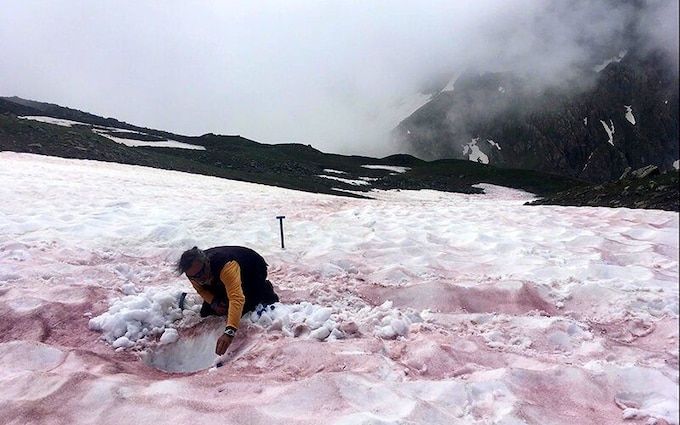Researchers at IRIG [Collaboration] have shown that the alga grows at the periphery of the ice crystals, inside free water flows circulating in the snowpack. The biologists analysed the alga's cellular architecture using 3D electron microscopy. They revealed the adaptations traits that enable it to live in the snow. For example, they observed that Sanguina's cell membrane is covered by small wrinkles that increase its surface area in contact with the surrounding environment. This enables the algae to extract the ions it needs for its growth from an environment that is extremely poor in nutrients.
The inside of the cell also held some surprises. The alga has a single chloroplast. Inside this chloroplast, the thylakoids, the lamellar structures where photosynthesis takes place, are not oriented in a single direction as in most plants and algae. In
Sanguina nivaloides they are arranged in all possible orientations allowing the capture of light scattered in all directions. This is an adaptation specific to life in the snow, an environment where light is diffused and reflected as in a hall of mirrors. The mitochondria, the cell's energy centres, are positioned directly on the periphery of the chloroplast to use the starch it synthesises. Finally, the research team looked at the algae's red pigments. They do not, as previously thought, serve to protect the cell nucleus from UV radiation. Consisting of carotenoids, they enable the alga to protect itself against the harmful effects of oxidising free radicals, in an environment bathed in very intense light levels.

© Jean-Gabriel Valay/Jardin du Lautaret/UGA/CNRS
After the snow melts, the alga reaches the soil and undergoes a metamorphosis allowing them to adapt to a radically different environment. Scientists now want to understand this unknown process. Time is running out, as the entire ecosystem dependent on
Sanguina nivaloides is threatened by climate change and the reduction of snowfall in the mountains.
Collaboration
- Cell & Plant Physiology Laboratory (CNRS-CEA-UGA-INRAE)
- National Centre for Meteorological Research (CNRS-Météo-France)
- Modeling and Exploration of Materials Laboratory (CEA-UGA)
- Institut de biologie structurale (CNRS-CEA-UGA)
- Unité d’appui et de recherche The Lautaret Garden (CNRS-UGA).
This work supported by the ANR as part of the AlpAlga programme is the first to be published with the help of the Kilian Jornet Foundation.